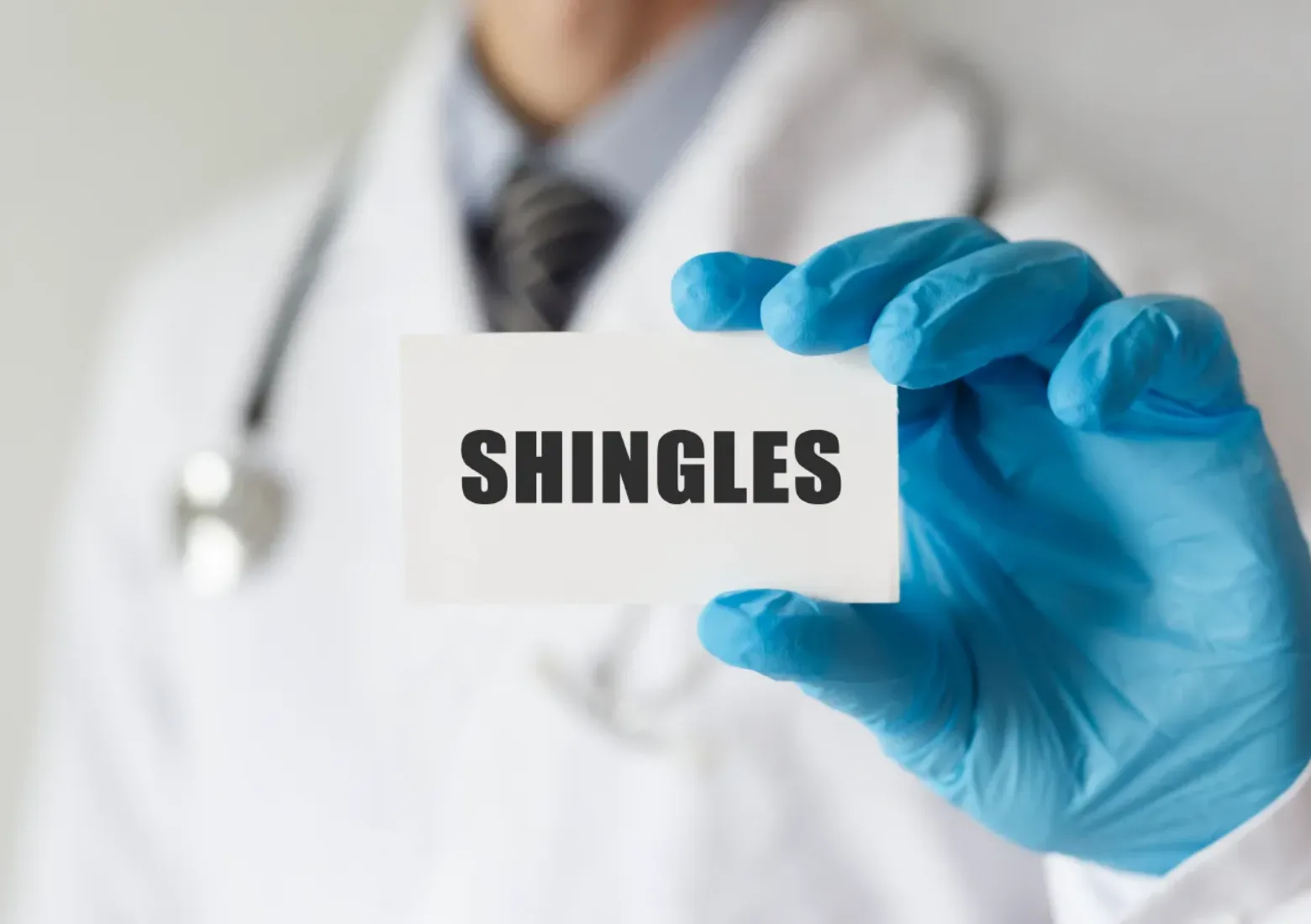Shingles: Everything You Need to Know
January 2 • 2023

1 in 3 people after the age of 50, and 1 in 2 people after the age of 70, will contract Shingles in their lifetime.
If you’re one of the 95% of American adults who had chickenpox as a child, you’re unfortunately at risk for developing Shingles at some point in your life. Why? Because both viral infections are caused by the same virus, known as Varicella-Zoster. We know this can sound a bit confusing, so let us break it down.
After someone has had Chickenpox [Varicella-Zoster], the virus remains inactive in your nerves — typically for decades. Once the virus is reactivated, it appears in the form of Shingles [Herpes-Zoster] causing a painful, blistering rash.
What causes the reactivation that leads to Shingles?
The Herpes-Zoster virus reactivates when your immune system is no longer able to suppress it. In most cases, the virus becomes active again in older adults over 50 since their immune systems grow weaker with age. However, those who have a chronic disease, a compromised immune system, or high levels of stress can develop Shingles at any time after already having had Chickenpox.
The good news is that Shingles is not contagious. A person can only develop Shingles if they have had the Chickenpox or the Chickenpox vaccine, as it contains the live virus. However, if someone who has never been infected with Chickenpox comes in contact with an open Shingles blister, that person can then develop Chickenpox. For the protection of others who have not yet been exposed to Chickenpox, it’s best to stay away from those individuals and keep your Shingles rash covered.
Typical Signs and Symptoms of Shingles:
The initial onset of Shingles typically starts a few days before a rash even appears, causing pain on the skin where the rash will eventually form. Patients generally describe this pain as itching, burning, stabbing, or shooting sensation and occurs before a rash is visible. Once the rash appears, it usually does so in the form of a band or patch on one side of your body — usually on your face, neck, or trunk area such as your chest, abdomen, or back but doesn’t cross your midline. Roughly three or four days after the rash appears, it will develop into painful fluid-filled blisters. In most cases, the blisters will begin to break open but will scab over within 7 to 10 days and should be completely healed within 2 to 4 weeks. While this is the most common experience for patients, it is possible to experience the pain without ever developing a rash.
Other early symptoms of Shingles may include fever, chills, fatigue, headache, and an upset stomach.
Common Complications of Shingles:
Some patients may experience more persistent pain in the affected area, lasting for weeks or months after their rash has healed. This is due to damaged nerve fibers caused by the Shingles infection, also known as Postherpetic Neuralgia — the most common long-term Shingles complication. On average, most people who experience Postherpetic Neuralgia recover within a year. However, in some cases, this pain can become permanent.
1 in 3 people after the age of 50, and 1 in 2 people after the age of 70, will contract Shingles in their lifetime.
How to prevent Shingles and who’s at risk:
At Aylo Health, we offer the Shingrix vaccine, which has been more than 90% effective in preventing Shingles for anywhere from 5 to 8 years. While it is possible to still develop a Shingles outbreak if vaccinated, most people experience a less severe case, compared to those who are non-vaccinated and are less likely to develop Postherpetic Neuralgia.
This vaccine is given in the arm as a 2-dose series, ideally 2 to 6 months apart after receiving the first shot, and is recommended for everyone ages 50 and older. Vaccination may also be recommended for those under the age of 50 who are immunocompromised, have a chronic medical condition, or have had a Shingles outbreak previously.
Some other preventive measures include eating a healthy diet, maintaining a healthy weight, getting sufficient sleep, and exercising regularly.
How is Shingles diagnosed and treated?
If you think you are experiencing Shingles-like symptoms, it’s important to contact your primary care provider immediately. Once they examine your rash, they will be able to identify if it is, in fact, Shingles. While there is no cure for this virus, some treatment options may be available to help relieve the pain and discomfort. Antivirals may also be recommended, which could shorten the duration and severity of symptoms. Different treatment options will be determined by your provider and will likely be based on several factors, such as the extent of the condition, your medical history, and tolerance to certain medications.
At Aylo, taking care of your health is our main priority. If you are interested in getting the Shingrix vaccine, you can request it at your next appointment or call (770) 268-4011.